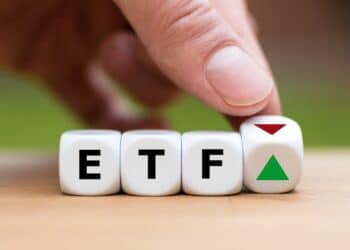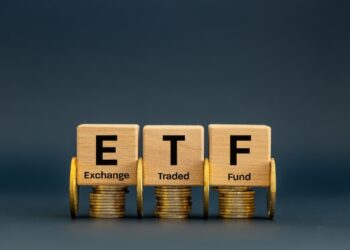Today’s investor is faced with minimal fixed income returns, late-stage equity valuations, and the prospect of growing market volatility. But now they may have somewhere to turn: convertible bonds.
Convertible bonds are corporate bonds issued with a call option that gives the holder the right to convert the bond to equity shares, bringing together equity and fixed income properties in a unique combination.
The call option allows fixed income investors to access to alternative sources of return in markets where returns of any sort are increasingly hard to come by.
For stock investors, the bond component is designed to act as a ‘floor’ underneath equity risk as markets become more volatile. For multi-asset investors, converts can add a bond-like stability to an equity tilt, and stock-like potential to a fixed income tilt.
And because of the unique nature of the convertible universe, they can act as a diversifier across a range of portfolios.
For those investors concerned that geopolitical uncertainties are mounting and the global economy may be slowing, now would seem to be an especially opportune moment for converts, in our view.
HISTORICAL BEGINNINGS
Originating in the US railroad boom of the 19th century, convertible bonds were used by entrepreneurs eager to preserve capital to invest in laying down track, by issuing the hybrid instruments as a way to save on interest expense and avoid depleting their balance sheets when principal repayment came due. That fundamental objective, conserving liquidity, hasn’t changed.
If conserving liquidity sums up convert issuers’ overriding objective, then converting the bond’s call option into equity shares describes their ulterior motive.
Aside from achieving issuers’ capital and liquidity objectives by repaying bondholders in shares instead of cash, conversion into shares deepens the market for their equity. This mindset contrasts to the frequent circumstance in conventional bonds, where bondholder concern for protection of principal can collide with issuer plans for growth.
Currently, convert issuance is dominated by small and mid-cap companies who are seeking to finance their expansions. However, the majority of small and mid-cap convert issuers are untested in the credit markets, meaning that much convert issuance doesn’t meet the exacting standards of an investment grade rating. In fact, well over half of convert issuers forgo an agency rating altogether to save on the expense of obtaining one.
However, convert issuers typically do not carry any other form of unsecured debt on their books.
According to a November 2019 Bloomberg review, more than four-out-of-five outstanding converts rank as senior unsecured debt, falling in right behind secured loans on the corporate capital stack.
Further, since many convert issuers refrain from issuing other forms of debt, they tend to have cleaner balance sheets than high yield and even investment grade issuers, as measured by risk ratios like free cashflow to debt and debt to earnings before interest, taxes, depreciation, and remuneration.
Access to global converts
The geography of convertible issuance and the character of convertible issuers have shifted over the years. As of July 2020, the lion’s share of activity – more than 68% – takes place in the US. The proceeds go largely to fund companies in the most dynamic sectors of the economy: information technology, biotechnology, and telecommunications.
Asia accounts for another 15% of the market. China has recently displaced Japan as the regional leader, and most of the region’s issuance, as in the US, comes out of the more dynamic economic sectors from companies whose American depositary receipts (ADRs) list on US markets.
Europe makes up the rest of the market, with an emphasis on consumer discretionary and industrial issuers. With prevailing eurozone credit yields treading perilously close to zero, and in some cases even below, European issuers have resorted to convertibles to entice fixed income investors with the opportunity for enhanced returns. European credit quality thus tilts more heavily toward investment grade than in the US and Asia.
This gives investors access to a much wider pool of investment opportunities across exciting sectors that they may not currently have access to. It also allows for diversification of their portfolios – again, a good option for where markets are currently.
FINDING VALUE IN VOLATILITY
In our view, the structure of convertible bonds favours investors – the potential for gain exceeds the potential risk of loss because of a differentiated payoff when the bond’s return profile falls in what we call the ‘mixed zone’. The mixed zone, where a convertible manifests its dual qualities, defines its sweet spot.
The properties of convertibles make them one of the few investments capable of thriving in volatile markets.
The dual nature of the investment gives them an advantage over conventional investments. They typically have short durations compared to other fixed income asset classes, which makes them relatively less sensitive to changing interest rates – issuers, as a rule, seek to cap their call exposure by issuing converts with short maturities. Rising rates, which undermine bond markets, usually accompany rising equity markets, which tend to lift the value of call options.
So the short duration supports the bond floor, while the call option affords an opportunity to participate in the upside. And just as greater convexity may generate more gain on the way up, it can deliver bond floor protection more swiftly on the way down.
Convertibles’ ability to withstand and even to profit from volatility has historically served long-term investors well. From the Global Financial Crisis (GFC) through the long subsequent recovery in markets, the convertible index held up better through the crash and kept pace in the rally.
Convertibles’ resiliency enabled them to realise equity-like returns over the long run with fewer and less bumps along the way. Their diversifying qualities and the presence of upside equity potential with a fixed income cushion make converts a prudent allocation in a strategic portfolio.
Markets in 2020
The volatility in markets in 2020 has been a positive for the convertible bond market. This is an asset class that thrives in volatile markets and 2020 has been no different. As you can see on Chart 1, performance has been strong in 2020.
During the first part of the year, until the end of February, convertible bonds captured the upside in global equity markets, even outperforming the MSCI All Country World Index (ACWI) countries. As the sell-off started from end of February to mid-March, convertible bonds became more and more defensive, and increased this outperformance relative to equities. When the rebound started in late March, convertible bonds quickly became more sensitive to equity prices and captured the rebound, maintaining a considerable outperformance relative to global equities. The net result has been a strong period of outperformance for the asset class.
The other interesting aspect of 2020 has been the primary market where convertible bonds are issued. It has been an open and active primary market. Since March 2020, the number of new issues is two times the same period in 2019.
This active primary market gives us new companies to invest in and importantly increases the overall convexity of the market. It also allows us to have access to sector at different stages of the recovery and articulate our positioning.
We currently have issuers that are pure recovery, still very much undervalued, like airlines, energy or tourism related companies. We also have issuers that have already started to recover, like semiconductors or payment processors. And finally, we have a lot of issuers in our market that are direct beneficiaries of the crisis – many companies in e-commerce, cybersecurity, cloud or even telemedicine.
In our view convertible bonds should be considered in an asset allocation framework in 2021, because they offer diversification, little overlap versus existing fixed income and can perform well during periods of volatility. The current conditions are excellent for the asset class, with a dynamic primary market and a market that is still quite attractive on a valuation basis.
Arnaud Brillois is managing director and portfolio manager at Lazard Asset Management.





